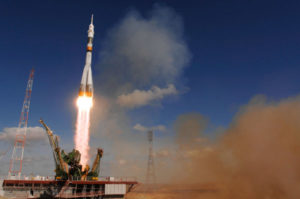With nearly 2000 launches to its name, the Soyuz rocket turns 50 years old today – it’s first launch was on November 28th, 1966, carrying a payload known as Kosmos 133, Kosmos being a universal codename for “unknown” Soviet Satellites. This craft was, in reality, the first test flight of the boosters namesake, the Soyuz Spacecraft, a vehicle that is still in use to this very day as the only manned transit to and from the International Space Station! While Kosmos 133 ended in failure, due to a guidance problem, the booster did it’s job, and did it well.

Soyuz is a natural evolution from the R-7 ICBM, and in its own right has had many evolutions and variations over it’s 50 year service history. Beyond launching Over 100 manned Soyuz missions, the booster has also launched over 1000 other payloads into various orbits, some out into deep space. It’s a machine that has simply worked, very reliably, over the past 50 years, with a minimum amount of failures given it’s relative design complexity and the sheer volume of flights.
Granted, the booster hasn’t always been perfect: it has had a few failures, including a pair of aborts on manned Soyuz missions, but by the raw numbers, this booster has a reliability rating on part with most any of the legendary US rockets, like the Saturn 1, 1B, and V.
It’s also worth noting the sheer beauty of the design – 4 outer strap on boosters flank the core stage, all igniting on the ground. At altitude, the boosters separate, with the core stage firing longer, before it too burns out and is released, leaving the upper stage to push the payload into Earth Orbit. A well evolved design, I would say, given the ICBM roots of the rocket.
It’s odd, I adore the Soyuz booster, but honestly have very little in general to say about it. I guess the best thing to do would be the usual case of sharing some links, and some videos, to those who may be interested. Enjoy!
союз
https://en.wikipedia.org/wiki/Kosmos_133
https://en.wikipedia.org/wiki/Soyuz_(rocket)
Here is an awesome onboard view – note the booster separation and the Korolev cross, an effect formed by the shape of the boosters during staging!
